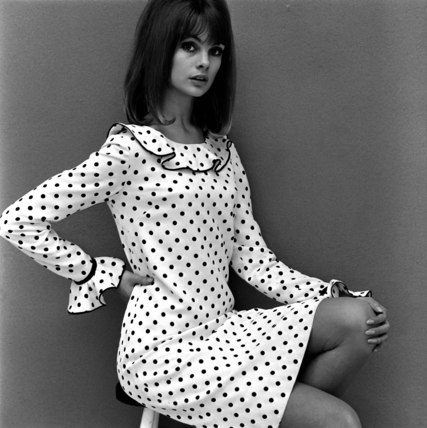Barbara Mary Quant: MiniSkirt and Hotpants
Dame Barbara Mary Quant, Mrs Plunket Greene, DBE, FCSD, RDI (born 11 February 1934) is a Welsh fashion designer and British fashion icon.
She became an instrumental figure in the 1960s London-based Mod and youth fashion movements. She was one of the designers who took credit for the miniskirt and hot pants, and by promoting these and other fun fashions she encouraged young people to dress to please themselves and to treat fashion as a game. Ernestine Carter, an authoritative and influential fashion journalist of the 1950s/60s, wrote: "It is given to a fortunate few to be born at the right time, in the right place, with the right talents. In recent fashion there are three: Chanel, Dior, and Mary Quant.
Early career
In November 1955, Quant and Plunket Greene teamed up with a photographer and former solicitor, Archie McNair, to open Quant's first shop on the King's Road in London called Bazaar, above "Alexander's", a basement restaurant run by Plunket Green. In 1957, they opened the second branch of Bazaar, which was designed by Terence Conran.
Successful designs from this early period included small white plastic collars to brighten up sweaters and dresses, bright stockings in colours matched to her knitwear, men's cardigans made long enough to be worn as dresses, and a pair of "mad" lounging pyjamas made by Quant herself which were featured in Harper's Bazaar and purchased by an American manufacturer to copy. Following this, Quant decided to design and make more of the clothes she stocked, instead of buying in stock. Initially working solo, she was soon employing a handful of machinists, and by 1966 she was working with eighteen manufacturers concurrently.
For a while in the late 1950s and very early 1960s, Quant was one of only two London-based high-end designers consistently offering youthful clothes for young people. The other was Kiki Byrne, who opened her boutique on the King's Road in direct competition with Quant.
Later career
In the late 1960s, Quant popularised hot pants and became a British fashion icon. Through the 1970s and 1980s she concentrated on household goods and make-up, rather than just her clothing lines, including the duvet which she claims to have invented.
In 1988, Quant designed the interior of the Mini (1000) Designer (originally dubbed the Mini Quant, the name was changed when popularity charts were set against having Quant's name on the car). It featured black and white striped seats with red trimming. The seatbelts were red, and the driving and passenger seats had Quant's signature on the upper left quadrant. The steering wheel had Quant's signature daisy and the bonnet badge had "Mary Quant" written over the signature name. The headlight housings, wheel arches, door handles and bumpers were all nimbus grey, rather than the more common chrome or black finishes. Two thousand were released in the U.K. on 15 June 1988, and a number were also released on to foreign markets; however, the numbers for these are hard to come by. The special edition Mini came in two body colours, jet black and diamond white. She is a Fellow of the Chartered Society of Designers, and winner of the Minerva Medal, the Society's highest award.
In 2000, she resigned as director of Mary Quant Ltd., her cosmetics company, after a Japanese buy-out. There are more than 200 Mary Quant Colour shops in Japan.
Recognition
In 1963 Quant was the first winner of the Dress of the Year award. In 1966 she was appointed Officer of the Order of the British Empire (OBE) for her outstanding contribution to the fashion industry. She arrived at Buckingham Palace to accept the award in a cream wool jersey minidress with blue facings. She was appointed Dame Commander of the Order of the British Empire (DBE) in the 2015 New Year Honours for services to British fashion.
In 1990 she won the Hall of Fame Award of the British Fashion Council. Quant received an Honorary Doctorate from Heriot-Watt University in 2006. In 2012, Quant was among the British cultural icons selected by artist Sir Peter Blake to appear in a new version of his most famous artwork – the Beatles' Sgt. Pepper's Lonely Hearts Club Band album cover – to celebrate the British cultural figures of his life.







